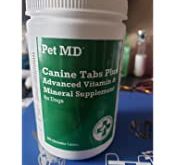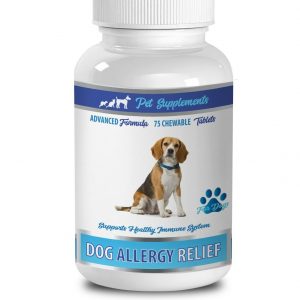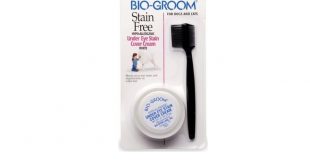Your pooch may seem perfectly alright this moment but after going out to play in the grass, sniffing some foreign substances or eating something… you begin to notice some abnormal reactions. If this happens your dog may be reacting to things it ate or came in contact with while playing. So, what you’re seeing could be the symptoms of an allergic reaction? Well just like humans, dogs are also prone to allergies. This article will be exploring the benefits of using Quercetin for dogs with allergies, but before we delve into that, lets talk about what an allergic reaction really is and its causes.
What’s an Allergy?

An allergy is an abnormal response of the immune system where the body reacts to a usually harmless substance in the environment called an “allergen” and the immune system begins to identify certain everyday substances as dangerous.
As a dog parent, watching your pooch scratching and licking here and there, isn’t pleasant to the eyes. Even worse, seeing it’s discomfort when it has to wear a “cone of shame”. This is the reason why finding a satisfactory solution for your dog’s allergies is a must-do.
There are various types of allergies in dogs and the best way to protect your dog from an allergic response is to make sure your pet is not exposed to the allergen in the first place.
But determining the cause of your dog’s allergy may prove difficult as this allergic reaction could be caused by seasonal allergens, food, or fleas.
Seasonal Environmental Allergens

Some of the most common seasonal environmental allergens that can affect your dog include; dust, dust mites, pollen and grass. These irritants are abundant at particular times of the year, and your dog’s reaction can worsen if it spends a lot of time outdoors.
Flea Allergy Dermatitis
Flea allergy dermatitis occurs when a dog’s immune system is super-sensitive to the antigen or protein in the saliva of fleas. This causes intense itching once it gets bitten by a flea and the itching can last for days.
This is often difficult to diagnose since it can be from one single flea, which means it can happen outside flea season.
Other Environmental Allergies
Dogs can also have allergic reactions to many household chemicals, mold and mildew. Your dog deserves an environment free from pollutants and moisture. Dogs are very sensitive to airborne particulates, and the exposure can cause breathing problems.
Food Allergies and your Dog
It can take a long time, even years for a dog to develop a food allergy. This can happen with the same food your dog eats every day and then it suddenly becomes allergic to an ingredient or a complete protein source. This allergy may even be from foods like; wheat, soy and corn.
Food allergy in your dog may also be related to the dyes and additives in many commercial treats. This is way more difficult to diagnose because up to 30% of dogs with food allergies also have other environmental allergy triggers.
Please note that your dog’s allergy could have a connection with its genes. Some dogs are more prone to allergies than others and allergies in dogs may present in different forms. Some symptoms of allergic reactions in dogs are:
- Itching of the skin, either in one area or all over its body.
- Hair loss.
- Red, inflamed skin.
- Constant licking.
- Respiratory concerns like; coughing, sneezing, and/or wheezing.
- Ear infections.
- Swelling of the face, ears, lips or eyes.
- Runny discharge from the eyes or nose.
- Digestive defects resulting in vomiting and diarrhoea.
What are your Options?
If your dog is demonstrating any of the above mentioned symptoms then it may be time to check with the veterinarian, because your dog is most likely having an allergic reaction.
Now, most dog owners opt for prednisone as a treatment option for their dog’s allergies. This prednisone is a synthetic steroid with high risks, especially with long-term usage.
If you prefer naturally occurring compounds as treatment options for your pooch, Quercetin may be the answer you seek…since this compound is mainly used to treat allergies in dogs, even though it has other health benefits.
Note this, Quercetin has its downsides when used wrongly, it is generally considered as a safe option for dogs.
Read on to find out more about Quercetin. We will be discussing the following topics:
- What is Quercetin? And, is it safe for your dog?
- Is Quercetin safe for your dog?
- Benefits of Quercetin for dogs.
- Other benefits of Quercetin for dogs.
- Mechanism of action for Quercetin.
- How to give Quercetin to your pooch.
- Recommended Quercetin dosages.
- Side effects of Quercetin in dogs.
- Conclusion.
What is Quercetin? and, is it safe for your Dog?
Quercetin is a plant-derived flavonoid, a phytonutrient naturally occurring in several fruits and vegetables, such as; kale, cherries, dark berries, parsley, radish leaves, green tea, blueberries, fennel leaves, lettuce, and broccoli.
It’s technically regarded as a plant pigment, which you will readily find most deep-pigmented fruits and veggies. In human nutrition and wellness, Quercetin is used broadly for its anti-inflammatory properties. It is also believed to improve endurance and athletic performance. But in our dogs, Quercetin is most often used to help with the itchiness, inflammation, and discomfort caused by allergies.
It is typically called “nature’s Benadryl” as a result of its natural anti-inflammatory, antioxidant, and antihistamine properties. When your dog is exposed to allergens, the immune system produces antibodies, and a chemical called histamine is released from inflammatory cells into the bloodstream. This is partly what causes itchiness, puffy eyes and irritated skin.
Research also reveals that Quercetin can “shut-off” histamine production and suppress, or at least moderate, inflammation. This means if your dog comes in contact with a potential allergen, it may not itch, or it will experience drastically reduced itching.
Also, Quercetin can replace conventional drugs like Benadryl to help your dog feel relieved, but studies show inconsistent response rates which means when you use Quercetin on your dog, you may not see it working as quickly as Benadryl will work. Although as a naturally-derived option, it’s worth using.
Note: Sometimes, a serious reaction called anaphylaxis may occur. This is a whole-body response to an allergen which can be life-threatening. In this case, all the symptoms of a “normal” allergic reaction are exaggerated and your dog may even lose consciousness. If you notice such a thing, please go to the vet immediately!
Is Quercetin Safe for your Dog?

Quercetin is natural and so far its use has been considered very safe for doggies. Supplements with this flavonoid are generally well tolerated in dogs.
But care needs to be taken when using Quercetin on your dog especially if your dog is being treated with other medications like; amitriptyline, ondansetron, tramadol, omeprazole, piroxicam, and Prozac (fluoxetine) which are metabolised through a particular pathway in the liver called the P450 pathway.
Other drugs that can potentially cause an adverse reaction when administered along with Quercetin are blood pressure and heart medications such as; amlodipine, enalapril, diltiazem, and furosemide.
This means if your pooch is already on a medication which you’re unsure about the active ingredient(s) it’s important to consult a veterinarian before administering any Quercetin-containing drug or supplement.
Benefits of Quercetin for Dogs

Although Quercetin has not yet been approved by the FDA for veterinary use, it is proven to possess some very beneficial properties and is often used as a natural alternative for treating allergies in dogs.
Some of the benefits of Quercetin use include:
Antihistamine Properties
Since Quercetin suppresses the release of histamine by blocking its release from the mast cells, it is very helpful in alleviating your dog’s allergic reactions.
Anti-inflammatory Properties
Quercetin doesn’t only reduce your dog’s swelling and itching by blocking the release of histamine. It also inhibits other inflammation-regulating enzymes to reduce swelling further.
Asthma Relief
This flavonoid is proven to inhibit the production of a type of lipid known as leukotrienes, which decreases levels of broncho-constriction to relieve dogs suffering from asthma.
It’s useful to know that two enzymes, bromelain and papain are often combined with Quercetin to boost its effectiveness.
Bromelain and papain also are known to suppress the release of prostaglandins, which further helps to decrease pain and inflammation in dogs with allergies.
Other Benefits of Quercetin for dogs
Anti-cancer Properties
Did you know that flavonoids have cancer-fighting properties? A study done by the University of Maryland Medical Centre shows that Quercetin (and other flavonoids) can slow the growth of cancer in the following areas:
- Breasts
- Colon
- Prostate
- Ovaries
- Endometrium
- Lungs
This is because cancer feeds off low-grade inflammation. Like inflammation that occurs from being overweight or exposed to toxins.
Fighting Free Radicals
Free radicals are molecules with missing electrons. When these molecules want to make themselves whole again, they take electrons from other molecules in the body cells. What happens now?
They cause large chemical reactions, called oxidation which is potentially harmful to body cells…repairing some cells leaving some incomplete.
Free radicals are created when cells metabolize and even during exercise, but they can also be created by toxins in the environment such as;
- Pesticides
- Tobacco smoke
- Pollution
If the free radicals take over cells, oxidative stress may occur, and fatty tissue, DNA and proteins will get damaged.
Such damage could easily be a cause of; Cancer, Premature ageing, Diabetes and many other diseases. To prevent oxidative stress, your dog must have an adequate supply of antioxidants. These antioxidants have electrons to spare so they work to stabilize free radicals to prevent oxidative stress.
Quercetin is also rich in antioxidants, this makes it a great choice for neutralizing free radicals and preventing diseases.
Prevention of Bone Loss
Recent studies show that chronic oxidative stress is also linked to periodontal disease and bone loss. Since antioxidants like Quercetin help to reduce or eliminate oxidative stress…it’s possible that they help prevent bone loss.
Quercetin has been proven to positively affect rats suffering from bone loss…there’s not much evidence from testing on dogs but its anti-oxidative power is proof that this compound may help dogs.
Other things Quercetin does are;
- Support weight reduction.
- Takes care of heart disease.
- Protects against the damage caused by bad cholesterol.
- Reduces blood pressure in cases of hypertension.
How Quercetin Works

Cyclooxygenase and lipoxygenase play an important role as inflammatory mediators. These enzymes are involved in the release of arachidonic acid, this is the starting point for a general inflammatory response.
The exact mechanism by which flavonoids inhibit these enzymes is not clear. Although Quercetin, in particular, inhibits both cyclooxygenase and lipoxygenase activities, thus diminishing the formation of these inflammatory metabolites.
Quercetin affects immunity and inflammation by acting on leukocytes and targeting many intracellular signalling kinases and phosphatases (enzymes and membrane proteins often crucial for a cellular specific function).
This flavonoid inhibits the production and release of histamine and other allergic and inflammatory substances, possibly by stabilizing cell membranes of mast cells.
In particular, Quercetin is an inhibitor of allergic (IgE-mediated) mediator release from mast cells and basophils (another type of white blood cell involved in immune reactions).
Mast cells are influential immune cells important for the pathogenesis of allergic responses and autoimmune disorders. They also affect the release of many cytokines involved in inflammatory reactions such as IL-8 and Tumor necrosis factor (TNF).
This is a reason why Quercetin is suitable for the treatment of mast cell-derived allergic inflammatory diseases such as asthma, sinusitis, and rheumatoid arthritis.
The anti-allergic and anti-inflammatory properties of Quercetin have been proved by several studies, in animal models and in-vitro.
How to give Quercetin to your Pooch

There are several ways to safely give Quercetin to your dog. Quercetin is usually combined in many supplements that comprise other nutraceuticals or antioxidants like vitamin C. It’s also possible that you’ll find Quercetin alone in a supplement form or combined with bromelain.
Regardless, many supplements don’t contain high-enough doses of Quercetin for it to be anti-inflammatory which means these supplements will be less effective.
As earlier stated, bromelain increases the effectiveness of Quercetin. So, to realize desirable results, it’s best to find the supplements that combine bromelain and Quercetin.
Quercetin with bromelain typically comes in a capsule form and this is one of the easiest and most effective ways to use Quercetin for your dog.
When using Quercetin for your dog’s allergies, it is best given on an empty stomach without food. Otherwise the bromelain will be spent specifically for digestion instead of working on the present inflammation concern.
You can add a little food around the capsule when needed to help your dog take the supplement.
And if your dog refuses to take Quercetin in the capsule form, it is okay to open the capsule and sprinkle its content on your dog’s food to encourage your dog to consume the supplement.
Recommended Quercetin Dosages
A safe dosing guideline for Quercetin is 5-10 mg per pound of bodyweight, which can be administered twice a day. This should be given one hour before food or three hours after food. For example, a 25-pound dog can take between 125-250 mg of Quercetin twice a day by mouth.
But if your pet is already on a previous medication, it is best to discuss dosing with your veterinarian before administering Quercetin to your dog.
Side effects of Quercetin in Dogs

You must consult your veterinarian before adding any sort of supplementation to your dog’s diet. Being sure that your dog’s discomfort is caused by an allergy is important so that you can know that you’re treating the right ailment.
Although Quercetin is usually relatively safe, it is possible to overdose on this bioflavonoid, especially when using the supplements. So an appropriate dosing guideline from the veterinarian will help prevent potentially dangerous side effects.
Quercetin may not be an appropriate therapy for pregnant dogs, dogs that are receiving chemotherapy, or dogs taking anticoagulants or steroids.
Conclusion
Just like all kinds of supplements meant for your dog, it is important to administer the appropriate level of Quercetin supplementation based on your dog’s weight and symptoms. When using Quercetin, you can use these few tips to ensure you choose the best one for your doggie:
- Verify the purity – laboratory testing documentation should be available and show that there are no heavy metals and microbes present.
- Verify the plant source of Quercetin – Sophora Japonica flower is recommended for optimized concentration.
Some manufacturers incorporate laboratory or synthetic Quercetin, kindly look for supplements with natural Quercetin extract.
- Verify the quality – only use human-grade Quercetin for your dog.
Make sure you are feeding your dog something you’d be comfortable to ingest by yourself.
 Total Pooch Dog Supplements, Tear Stain Removers, De-wormers, Tylosin for Dogs and other great products.
Total Pooch Dog Supplements, Tear Stain Removers, De-wormers, Tylosin for Dogs and other great products.





